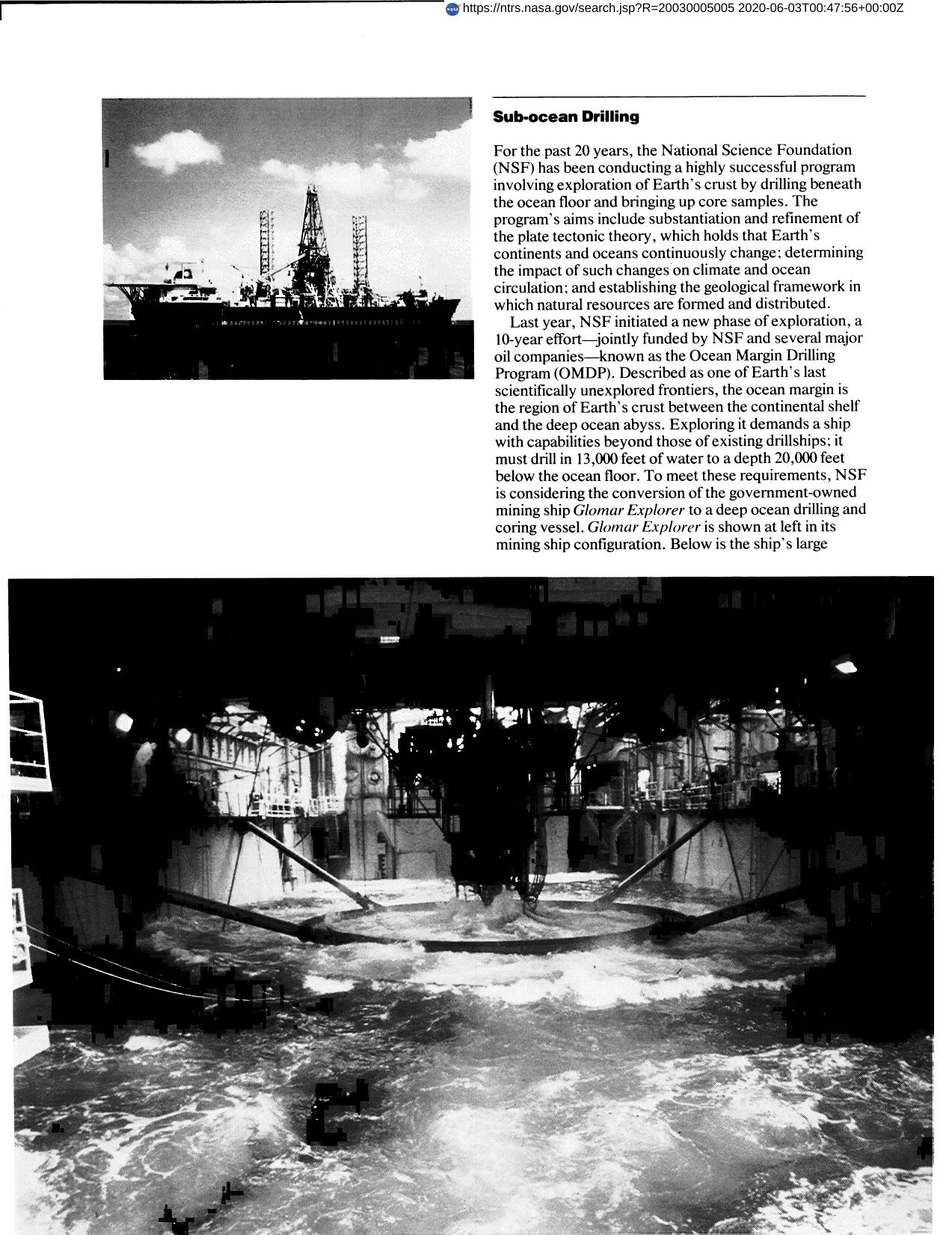
Sub-Ocean Drilling
The National Science Foundation (NSF) initialized a new phase of exploration last year, a 10 year effort jointly funded by NSF and several major oil companies, known as the Ocean Margin Drilling Program (OMDP). The OMDP requires a ship with capabilities beyond existing drill ships; it must drill in 13,000 feet of water to a depth 20,000 feet below the ocean floor. To meet requirements, NSF is considering the conversion of the government-owned mining ship Glomar Explorer to a deep ocean drilling and coring vessel. Feasibility study performed by Donhaiser Marine, Inc. analyzed the ship's characteristics for suitability and evaluated conversion requirement. DMI utilized COSMIC's Ship Motion and Sea Load Computer program to perform analysis which could not be accomplished by other means. If approved for conversion, Glomar Explorer is expected to begin operations as a drillship in 1984.
Full article: http://hdl.handle.net/hdl:2060/20030005005

Sub-Ocean Drilling

Sub-Ocean Drilling













